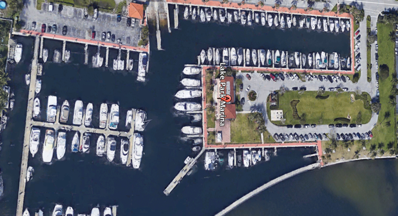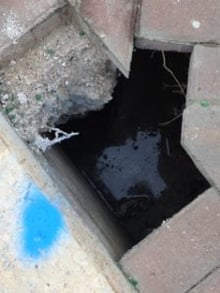Concrete Seawall Repair - Maintainable Weep Hole Filters
The Problem: Failing Sidewalks & Dangerous Sinkholes Lead to Concrete Seawall Repair and Installation of Maintainable Weep Hole Filters.
Lake Park Marina, located in Lake Park, FL, was built in the early 1990s. Situated on the Atlantic Coast, it experiences a high ground water table, numerous storms and receives 66” of average annual rainfall. By 2013, the marina was in need of extensive seawall repair to stop the soil loss, fill the sinkholes, repair the walkways and the concrete seawall. Finally, maintainable weep hole filters were installed to ensure proper drainage and erosion control.
|
|
|
"Severe Soil Loss" |
The marina had been experiencing severe soil loss and sinkholes behind the seawall which caused the beautiful paver-covered sidewalks to become buckled and uneven, with sinkholes forming in many locations. It got so bad, the city placed plywood, wrapped in artificial turf, over the walkways to prevent slips, trips and falls. They knew that they had a problem that was rapidly deteriorating. In 2013, the city called in several professional teams to investigate.
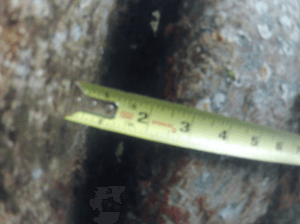 |
"Panel Separation" |
The Cause: Hydrostatic pressure caused by a lack of proper drainage
Teams thoroughly inspected the nearly 1600 feet of wall by probing the soils on the landward side of the wall as well as inspecting the panel/pile attachments on the water side. After removing some of the paver sidewalk, they found very weak soils and soil voids on the landward side. Additionally, many concrete seawall panels were found to be off-set and not properly attached to the pilings.
A lack of proper drainage from rainfall, storm events and runoff from the surrounding pavement caused the soil loss. When it rains in this area, the water has nowhere to properly drain with the exception of penetrating the brick paver areas around the marina. The water build-up behind the concrete seawall panels will look for an exit through a weak panel/pile attachment joint, or worst yet, under the driven panels themselves. In this case, hydrostatic water pressure moved the panels to allow the water a path to the sea all the while taking the supporting soils with it.
Hydrostatic pressure develops when groundwater “stacks up” behind the seawall. This groundwater is trying to seek a level with the existing water table and will do so taking the path of least resistance. If it wasn’t for the panel joint issues, it may go under the driven panel (creating even more problems) or if the hydrostatic pressure becomes great enough, could crack the concrete panel horizontally to create its own leak.
The Solution: Installing JET Filter's Maintainable Weep Hole Filters
After the concrete seawall repair, the wall failures, filling the sinkholes and finishing the concrete, it was discovered that the drainage system behind the wall was inadequate to properly drain the hydrostatic water pressure from behind the wall. The city knew their new walls were still at risk of failure.
The only way to properly address the issue is to vent the wall right above the normal barnacle line to give the water a defined, easier path to drain and to seal the panel joint failures! Mounting the filters in this area of the panel totally eliminates future hydrostatic pressure, and creates the new, easiest path of least resistance for water exfiltration.
In November 2014, Jet Filter System and Alon Beilis from Sea Me Dive were brought in to assess and fix the drainage issue. They installed 147 stainless steel, 4” maintainable weep hole filters manufactured by Jet Filter Systems of Casey, IL. Four-inch core holes were drilled through the center of the 10’ panels. If any steel rebar was exposed during drilling, it was treated with an epoxy sealant prior to filter installation.
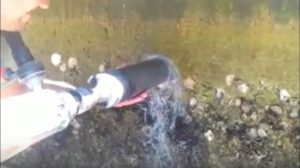 |
Installation:"Core Drilling" |
Lake Park Marina’s seawalls are now draining properly. Two years after the seawall repair, engineers were brought in to test the results. Small holes were drilled through the new sidewalks and penetrometer readings were randomly taken around the repair area only to find original repair soil compaction readings with zero soil voids and no soil settlement.
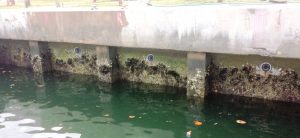 |
JET Filters Installed on Restored Seawall |

